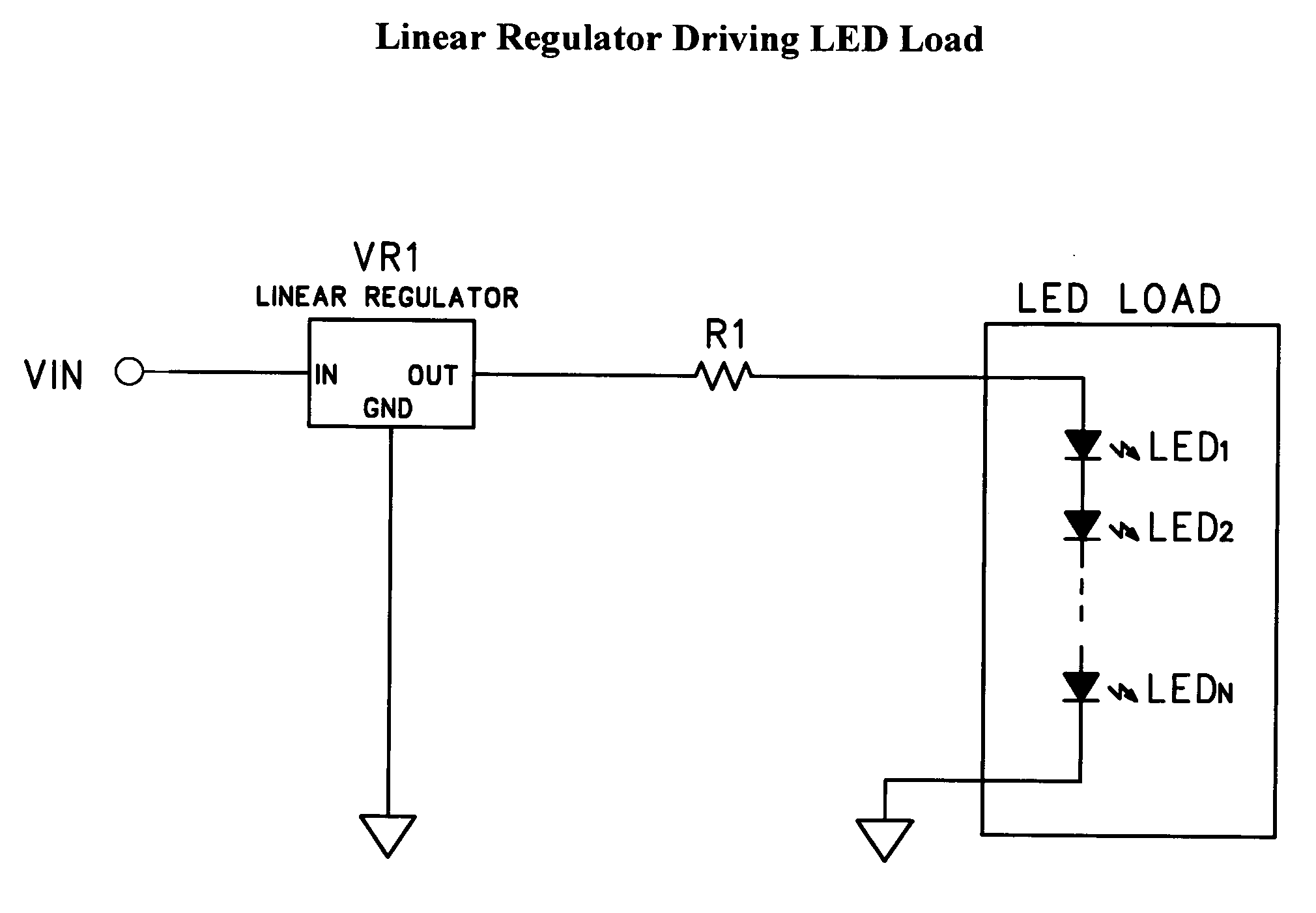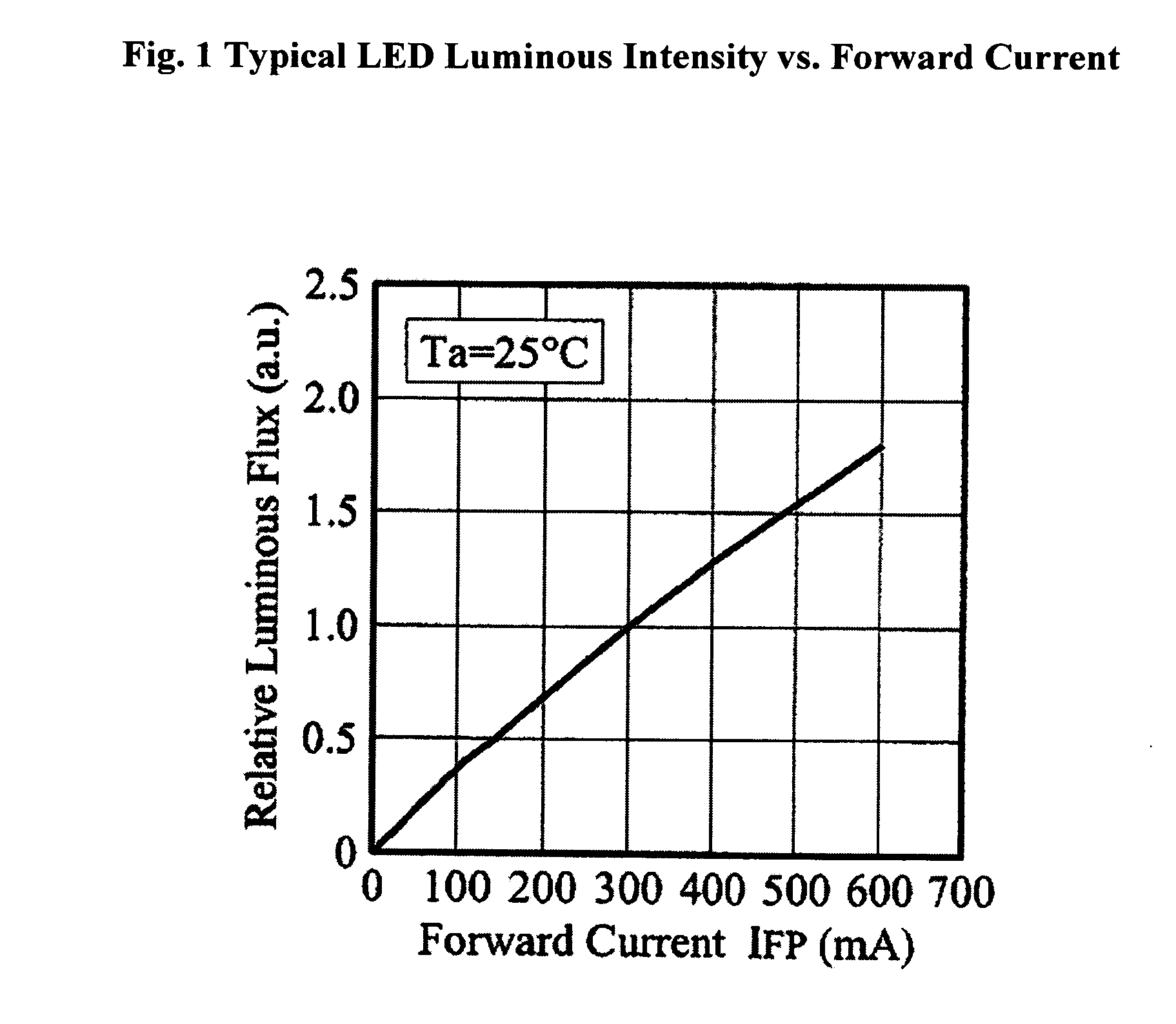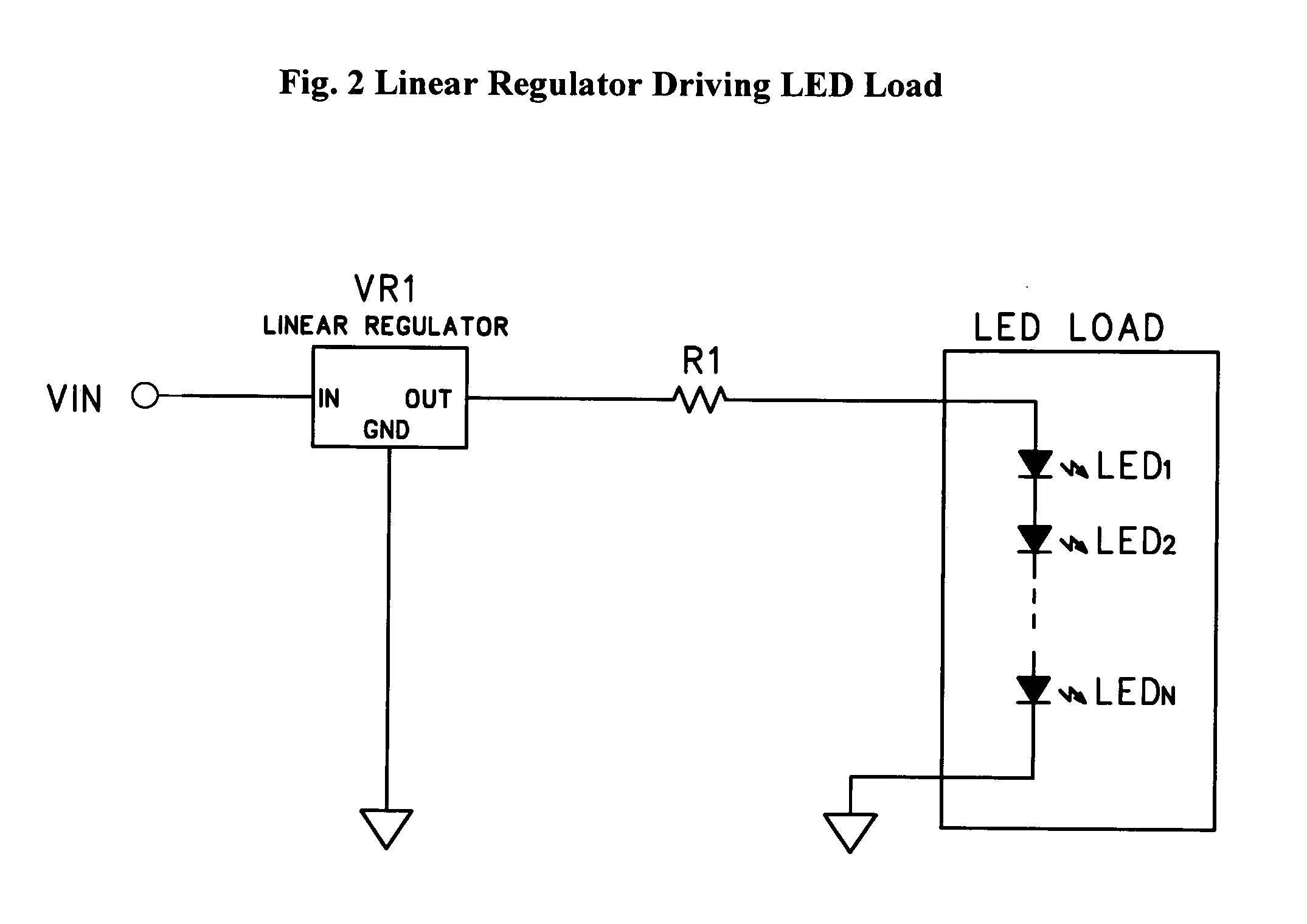Modified dimming LED driver
a technology of led drivers and dimming lights, which is applied in the direction of electric variable regulation, process and machine control, instruments, etc., can solve the problems of large changes, linear regulators are not very efficient circuits, and the level of forward current will degrade faster
- Summary
- Abstract
- Description
- Claims
- Application Information
AI Technical Summary
Benefits of technology
Problems solved by technology
Method used
Image
Examples
Embodiment Construction
[0026]FIGS. 5-7 show the typical shapes of the ac voltage input presented to a light or lighting system by standard ac dimmers. FIG. 5 shows a forward-phase control chopped sinewave typical of most silicon controlled rectifier (SCR) type incandescent wall dimmers. FIG. 6 shows a reverse-phase waveform which is sometimes provided by dimmers made for electronic or capacitive loads. FIG. 7 shows the type of ac voltage waveform presented by an autotransformer, and some higher-end dimming systems designed for theater lighting. In all of these cases, it is the input voltage that is modified (reduced in amplitude or chopped out during part of the sinewave) in order to present a lower average or rms voltage to the load. As explained in the Background section, this type of dimming can cause non-linear and unpredictable results when it is used with a switcher regulator circuit as is often the case in LED lighting products.
[0027]The present invention is best understood by starting with a typic...
PUM
 Login to View More
Login to View More Abstract
Description
Claims
Application Information
 Login to View More
Login to View More - R&D
- Intellectual Property
- Life Sciences
- Materials
- Tech Scout
- Unparalleled Data Quality
- Higher Quality Content
- 60% Fewer Hallucinations
Browse by: Latest US Patents, China's latest patents, Technical Efficacy Thesaurus, Application Domain, Technology Topic, Popular Technical Reports.
© 2025 PatSnap. All rights reserved.Legal|Privacy policy|Modern Slavery Act Transparency Statement|Sitemap|About US| Contact US: help@patsnap.com



